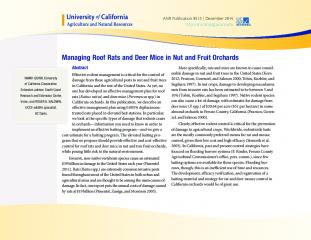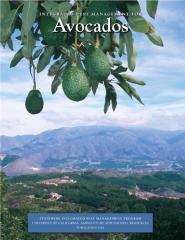Prunus dulcis is a deciduous Tree growing to 6 m by 6 m .
It is hardy to zone 7. It is in flower from March to April, and the seeds ripen in October. The species is hermaphrodite and is pollinated by Insects. The plant is self-fertile.
Suitable for: light , medium and heavy soils and prefers well-drained soil. Suitable pH: acid, neutral and basic soils. It cannot grow in the shade. It prefers moist soil.
Global Crop Management: Standard Staple Crop: Protein-oil
Thrives in a well-drained moisture-retentive loamy soil. Prefers some lime in the soil but is likely to become chlorotic if too much lime is present. Succeeds in sun or partial shade though it fruits better in a sunny position. The almond is often cultivated in the temperate zone for its edible seeds, there are many named varieties. It prefers a Mediterranean climate with a clear distinction between winter and spring, in milder maritime areas it can be induced into flower too early in the season and is then very liable to be damaged by frosts. There is also likely to be a shortage of pollinating insects around when the tree is in flower so hand pollination may improve the crop. Although partially self-fertile, better crops are obtained if at least 2 cultivars are grown. There are two basic forms of almonds, one with bitter seeds and one with 'sweet' seeds. The bitterness is caused by the presence of hydrogen cyanide . Although the bitter forms are used in making marzipan and as a food flavouring, the seeds themselves should not be eaten. Even the sweet forms should not be eaten in very large quantities. . Trees are hardier when grown on a plum rootstock. Almond seedlings are the preferred rootstock when plants are grown on hot dry soils, peach rootstocks are better for heavier soils. Trees are at least partially self-sterile. Most members of this genus are shallow-rooted and will produce suckers if the roots are damaged. Plants in this genus are notably susceptible to honey fungus. The plant is heat tolerant in zones 8 through 5. .
At this temperature, many plants begin to suffer physiological damage. Heat Zones range from 1 to 12 .
For example Heat Zone. 11-1 indicates that the plant is heat tolerant in zones 11 through 1.) For polyculture design as well as the above-ground architecture information on the habit and root pattern is also useful and given here if available. The plant growth habit is a standard with a non-suckering single trunk .
HabitatsThickets
Habitatshedges and rocky places near cultivation.
HabitatsWoodland Garden Secondary
HabitatsSunny Edge
HabitatsDappled Shade
HabitatsSouth Wall. By. West Wall. By.
HabitatsWoodland Garden Secondary
HabitatsSunny Edge
HabitatsDappled Shade
HabitatsSouth Wall. By. West Wall. By.
Resources
8513

Managing Roof Rats and Deer Mice in Nut and Fruit Orchards
Abstract
Effective rodent management is critical for the control ofhttps://anrcatalog.ucanr.edu/pdf/8513.pdf85138513
Managing Roof Rats and Deer Mice in Nut and Fruit Orchards
University of California, Agriculture and natural resources
Abstract
Effective rodent management is critical for the control of8515
ANR Publication 8515 | February 2015http://anrcatalog.ucanr.edu
University of California, Agriculture and natural resources
DAVID DOLL, University of
California Cooperative Extension8515

ANR Publication 8515 | February 2015
http://anrcatalog.ucanr.eduDAVID DOLL, University of
California Cooperative Extension
https://anrcatalog.ucanr.edu/pdf/8515.pdf8515Armillaria root rot UC ANR 3503

Armillaria Root Rot
Armillaria mellea
Armillaria root rot infects many crops and native and orna-http://www.ipm.ucdavis.edu/IPMPROJECT/ADS/Armillaria_root_rot_UC_ANR_3503.pdfArmillaria root rot UC ANR 3503Armillaria root rot UC ANR 3503
Armillaria Root Rot
Ipm.ucdavis.edu
Armillaria mellea
Armillaria root rot infects many crops and native and orna-
mental plants. Common hosts include avocado, cherimoya,
Major pests
- Amyelois transitella
Anarsia lineatella
Aporia crataegi
Apple mosaic virus
Armillaria mellea
Armillaria tabescens
Botryosphaeria ribis
Brachycaudus helichrysi
Bromus hordeaceus
Bryobia rubrioculus
Candidatus Phytoplasma phoenicium
Capnodis tenebrionis
Ceratocystis fimbriata
Ceresa alta
Criconemella
Cydia latiferreana
Cydia pomonella
Cynodon dactylon
Diaporthe eres
Euproctis chrysorrhoea
Eurytoma amygdali
Euzophera pinguis
Glomerella cingulata
Helicotylenchus dihystera
Homalodisca vitripennis
Hop stunt viroid
Malacosoma neustria
Malacosoma parallela
Monilinia fructigena
Monilinia laxa
Naupactus xanthographus
Otiorhynchus cribricollis
Parthenolecanium persicae
Peach yellows phytoplasma
Philaenus spumarius
Phymatotrichopsis omnivora
Phytophthora cambivora
Phytophthora cryptogea
Phytophthora megasperma
Plum pox virus
Podosphaera tridactyla
Pratylenchus vulnus
Prune dwarf virus
Prunus necrotic ringspot virus
Pseudomonas amygdali
Rhizobium radiobacter
Rhizobium rhizogenes
Saturnia pyri
Theba pisana
Tribolium castaneum
Trichodorus
Xanthomonas arboricola pv. pruni
Xiphinema americanum
Xylella fastidiosa
Xylotrechus namanganensis
Yponomeuta padellus
Minor pests
- Anastrepha fraterculus
Anastrepha obliqua
Apomyelois ceratoniae
Apple chlorotic leaf spot virus
Armillaria luteobubalina
Aspergillus flavus
Aspergillus niger
Botryosphaeria dothidea
Botryotinia fuckeliana
Cadra cautella
Caliroa cerasi
Carposina sasakii
Colletotrichum coccodes
Collophora hispanica
Discostroma corticola
Ephestia kuehniella
Eutetranychus orientalis
Eutypa lata
Fusarium brachygibbosum
Fusicoccum amygdali
Grapholita funebrana
Grapholita molesta
Hyalopterus pruni
Lasiodiplodia theobromae
Little cherry virus
Monilinia fructicola
Panonychus ulmi
Parthenolecanium corni
Peach latent mosaic viroid
Peach wart disease
Phyllophaga
Phytophthora cactorum
Phytophthora chlamydospora
Phytophthora citrophthora
Phytophthora niederhauseri
Phytophthora syringae
Phytoplasma pruni
Phytoplasma prunorum
Polystigma fulvum
Pratylenchus thornei
Pseudomonas syringae
Pterochloroides persicae
Rosellinia necatrix
Sclerotinia sclerotiorum
Scolytus amygdali
Stigmina carpophila
Taphrina deformans
Tetranychus pacificus
Tetranychus urticae
Tomato black ring virus
Tomato ringspot virus
Tranzschelia pruni-spinosae
Ulocladium atrum
Venturia carpophila
Verticillium dahliae
